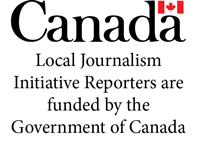On International Overdose Awareness Day (Aug. 31), it’s critical for every Canadian to understand that an opioid overdose can happen to anyone – to you or someone you love.
According to Health Canada, a staggering 94 per cent of opioid overdose deaths happen accidentally, but there are concrete actions and steps that you can take to help, such as learning how to identify an overdose and help to save a life with a naloxone kit.
Opioids are often prescribed for certain procedures or ailments, such as surgery or sports injuries, and while there are recommended uses for an opioid to be prescribed, there are risks.
People taking opioids and those around them should not only understand the signs and symptoms of an opioid overdose but should also have an easily-accessible naloxone kit on hand in case of an emergency. Naloxone kits come in a slim, small carrying case, which can be kept nearby in a discreet location. Some common signs and symptoms of an opioid overdose may include loss of consciousness, unresponsiveness (can’t wake them up), and/or slow and shallow breathing. The person may also begin vomiting or choking, and their skin may turn pale, blue, or ashy.
During an opioid overdose, naloxone can be administered to help temporarily reverse it. Naloxone is a rescue medication that works by blocking the opioid’s effect, and in most cases can help people breathe normally again. Like other emergency devices such as automatic external defibrillators (AEDs) or EpiPens, naloxone is used to save lives during a medical emergency and is also considered an essential medicine by the World Health Organization.
Naloxone is available as a nasal spray (intranasal) or injectable (intramuscular). Your local Ontario pharmacy has free injectable and intra-nasal naloxone kits available to protect yourself or a loved one, and pharmacists are qualified to offer training on how to use a kit so you can be prepared. On top of training provided by pharmacists, naloxone kits include simple instructions on how to administer naloxone.
Sometimes an individual may be scared to intervene or help when witnessing an overdose, but there are legal protections in place to help encourage Canadians to save a life during an overdose situation. The Good Samaritan Drug Overdose Act applies to anyone seeking emergency support during an overdose, including the person experiencing an overdose. The act protects the person who seeks help, whether they stay or leave from the overdose scene before help arrives, as well as anyone else who is at the scene when help arrives.
Learn more about the signs and symptoms, or how to help prevent an opioid overdose by speaking to your local pharmacist about receiving a naloxone kit today.
***
Avril Yvette Sun is the pharmacist and owner of Shoppers Drug Mart in Listowel.



